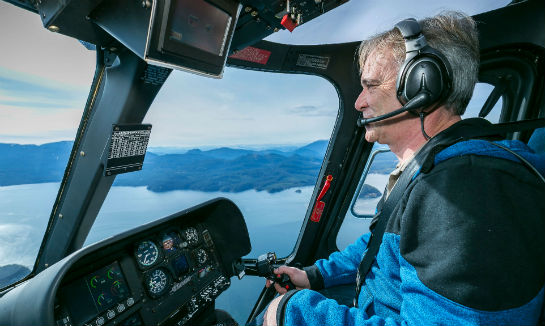Estimated reading time 7 minutes, 18 seconds.
Last week’s update from Transport Canada revealed it is now aiming to introduce the regulatory changes as one amendment covering all air taxi, commuter, and airline operators (CARs Subparts 703, 704 and 705, respectively). Heath Moffatt Photo
Transport Canada has told industry leaders to expect a new draft of flight crew fatigue management regulations in Canada Gazette I in spring 2017, but has not revealed what may be in the latest version of the controversial proposals that have now been six years in development.
But while the extent of the proposed changes to flight and duty time regulations is unknown, Transport Canada has laid out a clear timeline for the regulatory process going forward—with helicopter operators having at least until 2022 to bring themselves into compliance with the new regulations.
In a meeting held June 21 with stakeholders, and in a subsequent letter to Canadian Aviation Regulation Advisory Council (CARAC) members, Michel Béland, director of policy and regulatory services at Transport Canada, said the regulator was “now in a position to confirm the policy direction being taken by the department to develop regulations that will respond to pilots’ and air operators’ concerns, as well as Canada’s international obligations.”
Béland said Transport Canada is proceeding with the amendment of the prescriptive flight and duty time limitations as well as the introduction of fatigue risk management systems (FRMS) that were first announced in a notice of proposed amendment (NPA) in September 2014.
That NPA received staunch opposition from a dozen industry associations that quickly mobilized against it, with many claiming that they had been “blindsided” by its publication on 48 hours’ notice, Helicopter Association of Canada (HAC) president
Fred Jones told Skies at the time.
Among the contentious provisions in the NPA were a drop in the maximum length of a flight duty period (FDP) to between nine to 13 hours (depending on the start time of the flight duty); a reduction in the maximum tour length from 42 days to 15; and a removal of the ability to reset a pilot’s accumulated 30-consecutive day, 42-consecutive day, and 90-consecutive day flight times to zero after five consecutive days free of duty.
The FRMS suggested by the NPA gives operators the option of implementing that rather than adhering to the prescriptive requirements. Similar to a safety management system, an FRMS would need to satisfy specific requirements and be approved by Transport Canada, but could afford operators with challenging scheduling needs some much needed flexibility.
HAC’s Jones, who was present at the June 21 meeting, said he was told by Transport Canada that it had adjusted the provisions in the amendment to reflect industry feedback from the NPA.
“We don’t know how many changes have been made, but my belief is they will be tinkering around the fringe of this, they will not have addressed the substantive concerns that have been raised by HAC and others,” said Jones.
He added that his biggest concern is the implementation of a “one-size-fits-all” approach that is designed primarily with airlines in mind. “They claim that it’s because pilots are pilots are pilots—and they need the same regulation and same working hours, but it doesn’t recognize the unique circumstances of the different industry segments,” said Jones. “They’re treating float[plane] pilots and helicopter operators the same way they’re treating airline pilots, and they’re very, very different. And even if you still respect the principles as they relate to human fatigue, you can address them in different ways for different segments of the industry to avoid forcing a round peg into a square hole the way they have been doing, I believe, with helicopter operators and others.”
In August 2015, the NPA was followed by a notice of intent (NOI) to amend the Canadian Aviation Regulations (CARs) to address flight crew fatigue management, which suggested a change to the flight and duty regulations in two phases: the first phase to apply to CARs Subpart 705 airline operators; the second phase to apply to all air operators.
In last week’s update from Transport Canada, it revealed that it is now aiming to introduce the regulatory changes as one amendment covering all air taxi, commuter, and airline operators (CARs Subparts 703, 704 and 705, respectively). The amendment will not apply to private or aerial work operators (CARs Subparts 604 and 702).
“They want the same rules, more or less, to apply to 703, 704 and 705 operations and it just doesn’t work,” said Jones.
According to Transport Canada’s timeline, the industry will have 60 days from the publication of the draft proposals in Canada Gazette I to submit written comments to the regulator. Transport Canada will then take a period of time—likely several months—to work through the comments, and provide their rationale for accepting or rejecting each one. It will then publish the final regulations in Canada Gazette II, which will mark the start of a phased implementation process—with CARs Subpart 705 operators having 12 months to bring themselves into compliance, and CARs Subpart 703 and 704 operators having 48 months to do so.
“The idea that it is probably going to be 2023 before it touches the helicopter community at all is some comfort,” said Jones. “However, HAC’s own view is, unlike wine, bad news never gets better with time.”
Jones said that the advance notice would at least give the various associations an opportunity to get ready ahead of the amendment’s publication in Gazette I.
“This has been, for the last three years, the single biggest regulatory catastrophe affecting our industry,” said Jones. “If it looks like the September 2014 NPA with some window dressing, it’s just going to be devastating to our industry. We already have a shortage of experienced helicopter pilots—and this is just going to aggravate it.”
With files from Elan Head

